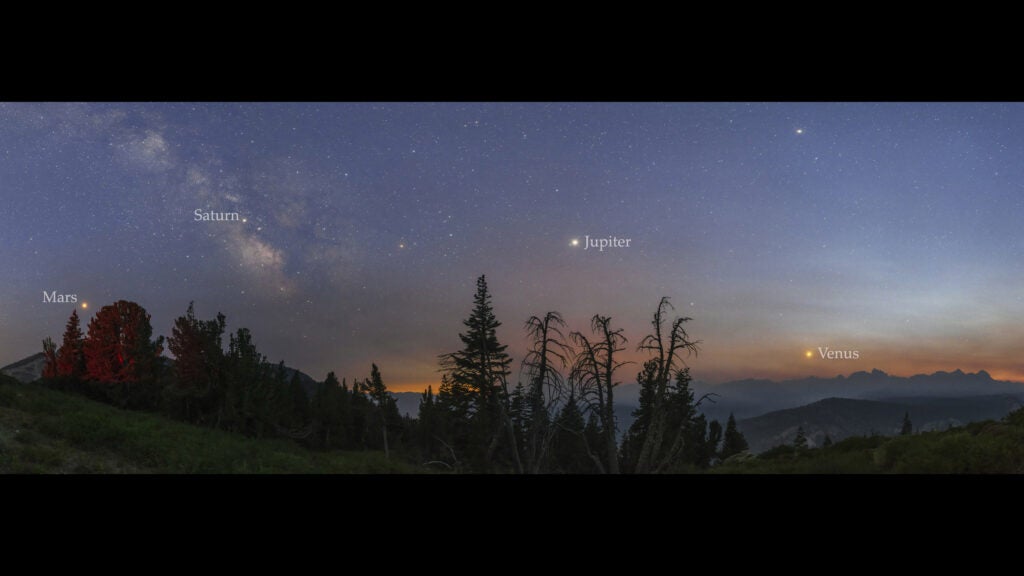This year presents an exciting opportunity for stargazers and astronomy enthusiasts as several incredible celestial events are on the horizon. Notably, 2025 will feature stunning “planet parades,” where multiple planets align in the night sky, offering observers a spectacular show. Among these, the first and perhaps most noteworthy parade commences on January 18, showcasing Venus and Saturn positioned a mere 2.2 degrees apart. This dazzling event is set to extend into mid-February and will be followed by additional planetary gatherings later in the year.
Understanding Planet Parades
While observing grouped planets is not an everyday event, NASA notes that such occurrences are not extremely rare either. As nature lovers gear up to witness this astronomical display, it is essential to comprehend the best methods for viewing a planet parade. Stargazers can typically view Venus, Mars, Jupiter, Saturn, and Mercury without a telescope. However, Uranus can only be seen under ideal conditions, while Neptune remains invisible to the unaided eye.
Expert Tips for Stargazing
To fully enjoy the stellar line-up, a few tips can enhance the experience. Utilizing a stargazing application, like SkySafari, can assist in navigating the night sky and identifying celestial bodies. Distinguishing planets from stars is straightforward: planets shine steadily, while stars tend to twinkle. Stargazing is made simpler, as even brightly lit cities allow for clear views of visible planets.
Peak Viewing Times for 2025
For avid astronomers, the peak viewing of this month’s planet parade will unfold as follows: on January 18, Venus and Saturn will align closely in the southwest sky right after sunset. This mesmerising spectacle continues through mid-February, with notable evenings featuring Jupiter and Venus becoming more radiant on January 21. Observers can expect a celestial highlight on February 1, when Venus graces the evening sky alongside the crescent moon.
Upcoming Planet Parades
Marking the calendar for upcoming gatherings is essential; in late February, around the 28th, all seven planets will briefly shine in the sky. However, spotting Saturn may prove challenging due to its proximity to the sunset glow. Similarly, plan to observe a stunning alignment occurring mid-August, where multiple planets will be visible in the pre-dawn sky, particularly as Mercury reaches its farthest point from the sun.
Optimal Locations for Stargazing
Finding the perfect spot is crucial for maximizing the stargazing experience. It is advisable to seek out locations with minimal obstructions and limited light pollution. National parks offer some of the best settings for observing celestial events. For instance, parks such as Everglades National Park in Florida and Canyonlands National Park in Utah provide prime viewpoints and organized stargazing events. Detailed knowledge of locations can significantly impact your experience.
Preparation for the Stargazing Experience
As stargazers prepare to enjoy the magnificent planet parades, packing essentials is vital. Bring along comfortable seating, warm clothing, and quality binoculars or telescopes if available. Additionally, consider using stargazing apps to enhance your understanding of the night sky and discover fascinating facts about the planets and other celestial bodies on display.
With so much to look forward to in 2025, there has never been a better time for astronomy enthusiasts to immerse themselves in the wonders of the universe. As these planet parades draw nearer, consider reaching out to local observatories or astronomy clubs for the chance to participate in community stargazing events and deepen your engagement with this beautiful science.
